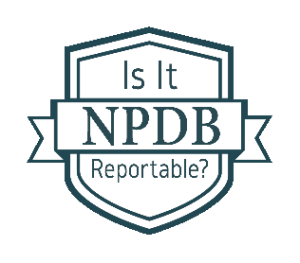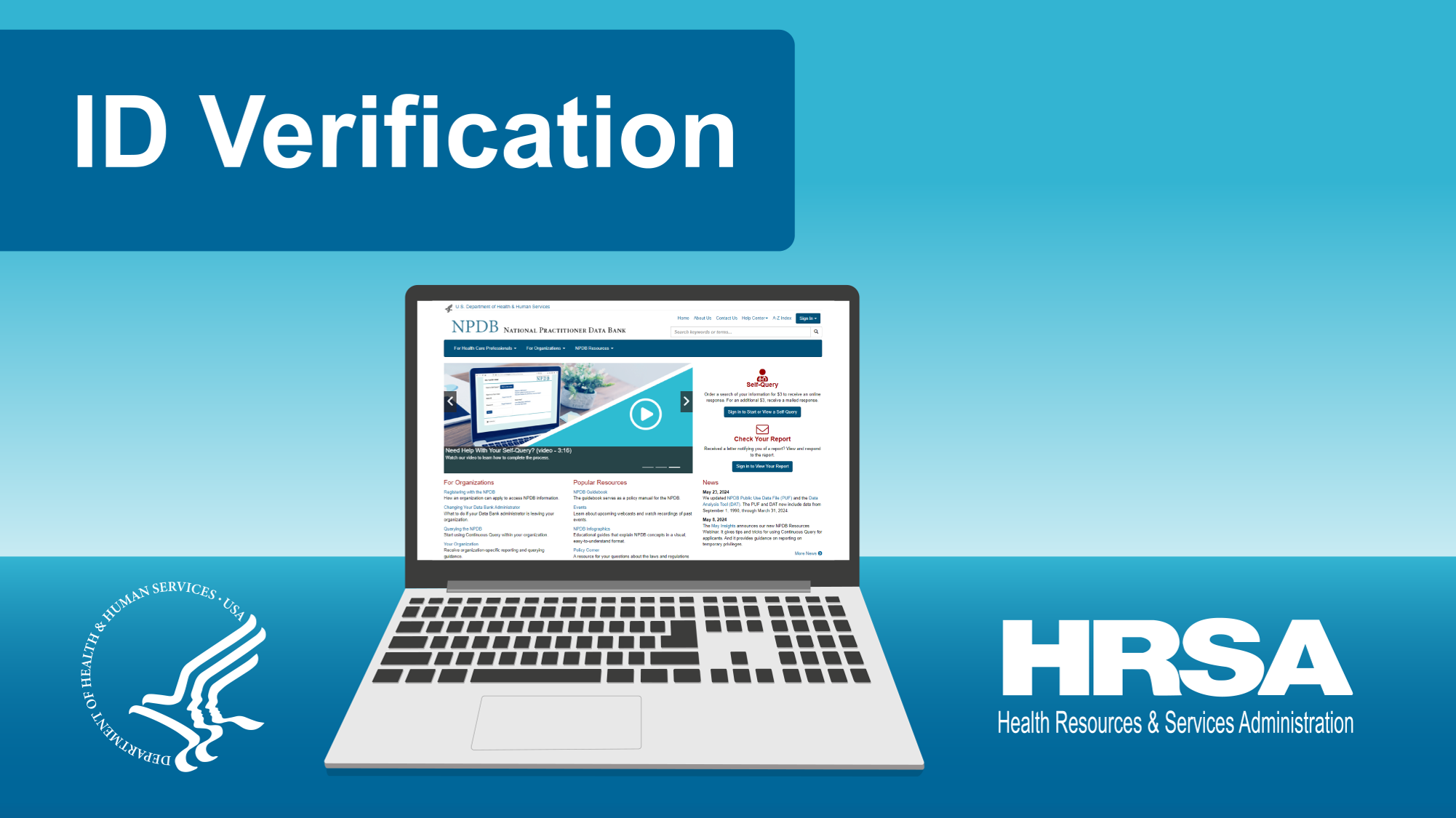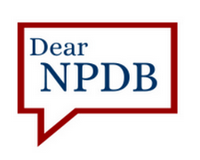NPDB Insights - July 2024
NPDB Resources Webinar Recording Is Now Available
Did you miss our NPDB Resources webinar in June? The recording and presentation slides are now available.
The webinar provided a practical overview of the online support and data available to NPDB users and researchers. The presentation featured popular resources such as the NPDB Guidebook, infographics, and compliance map. The presentation also included a discussion about the contents and usage of the NPDB Data Analysis Tool and Public Use File.
Did you you miss any of our past webinars? Check out our Events page for past event materials.

Is It Reportable?
A patient's mother, who has no legal authority over the patient, files a written claim against a health care practitioner, demanding payment based on the practitioner's services to the patient. A medical malpractice payer organization pays the patient's mother the amount the mother demands. Should the payment be reported to the NPDB as a medical malpractice payment?
Yes. The NPDB's statutes and regulations do not limit the filing of medical malpractice reports based on the identity of the payee. As long as an entity makes a payment for the benefit of a health care practitioner in settlement or in satisfaction, in whole or in part, of a written claim of judgment for medical malpractice made against the practitioner, the payment must be reported. Therefore, the payment to the mother should be reported if all requirements of 45 CFR § 60.7 are met.
How to Sign in With MFA and Identity Verification
How to Sign in With MFA
Multi-factor authentication, or MFA, is the first step toward ensuring your NPDB account's security. MFA is an authentication method that requires you to provide two or more verification factors to gain access to the NPDB. These factors include something you know, such as a password, and something you have, like a mobile phone. To review methods and options for setting up MFA, visit ID.me Exit Image . Use of MFA to access your NPDB account is mandatory. For step-by-step instructions on how to sign in with MFA, visit our Multi-Factor Authentication Help page, or our How To Use Multi-Factor Authentication for the NPDB video.
. Use of MFA to access your NPDB account is mandatory. For step-by-step instructions on how to sign in with MFA, visit our Multi-Factor Authentication Help page, or our How To Use Multi-Factor Authentication for the NPDB video.
How to Complete Identity Verification on Your Account

How to Complete Identity Verification
Watch the Video (2:54)After enabling MFA for your user account, you will be asked to complete identity verification to meet required federal cybersecurity standards. Identity verification is an approach for verifying and authenticating the identity of individuals accessing the NPDB. While it is optional now, starting July 25, 2024, a subset of NPDB users will be required to identity verify before they can access their accounts. Each week, identity verification will be rolled out to more users until all are incorporated. You will be notified by email 1 week before you are required to complete identity verification.
The majority of users will be able to complete the identity verification process on their own. In some cases, you may be directed to a video call with ID.me, our identity verification vendor, to complete the process. The NPDB Customer Service Center is also available if you have questions about the process.
If you are using a PIV card or CAC for MFA, your identity is already verified. If you are using ID.me for MFA, you can use ID.me's "self-service" option for identity verification, which can be completed in minutes. To do so, you will need three items:
- A computer with a webcam or a mobile phone that belongs to you personally or has been assigned to you by your employer and has a camera.
- A government-issued photo ID (U.S. driver's license, state ID, U.S. passport, or U.S. passport card).
- Your Social Security number (SSN) or Individual Taxpaper ID Number (ITIN).
To complete identity verification using self-service, follow ID.me's onscreen instructions to take photos of the front and back of your identity document. Next, follow the onscreen instructions to record a brief video of yourself. ID.me verifies your document and compares the photo to your video. Next, enter your SSN or ITIN. ID.me displays a success message when your identity is verified. A final message is displayed for you to agree to share your information with "HHS XMS." This is the federal service that transmits your information securely to the NPDB.
Visit ID.me's NPDB help page Exit Image for help with identity verification.
for help with identity verification.
For step-by-step instructions on how to complete identity verification, check out our new video, How to Complete Identity Verification.

Dear NPDB
Is it true that reports of clinical privileges actions taken only need to be submitted for physicians and dentists?
Hospitals and other health care entities must report certain clinical privileges actions taken against physicians and dentists. They also may report the same actions taken against other privileged health care practitioners. However, most other types of reports, including state licensure reports and medical malpractice payment reports, are mandatory for ALL practitioner types.
See the Reportable Actions table for more information about who must report what.
We strongly encourage submitting clinical privileges action reports on all practitioners. This helps make the NPDB more robust and keeps querying entities better informed.
Visit Chapter E: Reports of the NPDB Guidebook to learn more.
The latest updates and resources are available at https://www.npdb.hrsa.gov.
Previous editions of NPDB Insights are available in our archive.
 An official website of the United States government.
An official website of the United States government.

